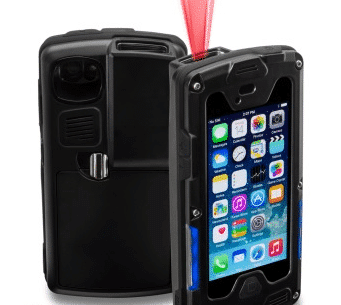Theft has long been a problem in the construction industry. One that’s recently been aggravated by supply chain disruptions, rising prices, and other emerging global issues.
Naturally, this puts the spotlight on construction site security, which can be both complex and challenging.
If you want to keep your site secure and your project on schedule, technology can help.
Here’s how.
In this article...
GPS Tracking
The Global Positioning System (GPS) has been a part of our lives for a long time now. We mainly use it to get around or get specific information relevant to our location.
When people think about GPS, the first thing to pop into their minds is usually their smartphone or the navigation system in their personal vehicle.
For instance, your smartphone is essentially a beacon that can show your location in real time, since it has built-in location tracking.
The same basic principle is applied to construction worksites and equipment that’s often outfitted with GPS tracking devices to monitor usage and prevent theft.
That’s called active GPS tracking. Here’s what it looks like for vehicles.

So, if any piece of construction equipment with an active GPS tracker on it is stolen, you will be able to pinpoint its exact location and alert law enforcement.
Unless, of course, the tracker is physically removed.
When it comes to real-time tracking, there’s simply no comparison.
But it also has some downsides, primarily when used for tracking small equipment and tools.
Active GPS tracking is power-intensive, so it’s primarily used to track heavy equipment and vehicles with their own power supply.
It is also way too expensive to be used for, let’s say, tracking your favorite cordless drill.
That problem is partially fixed with passive GPS tracking.
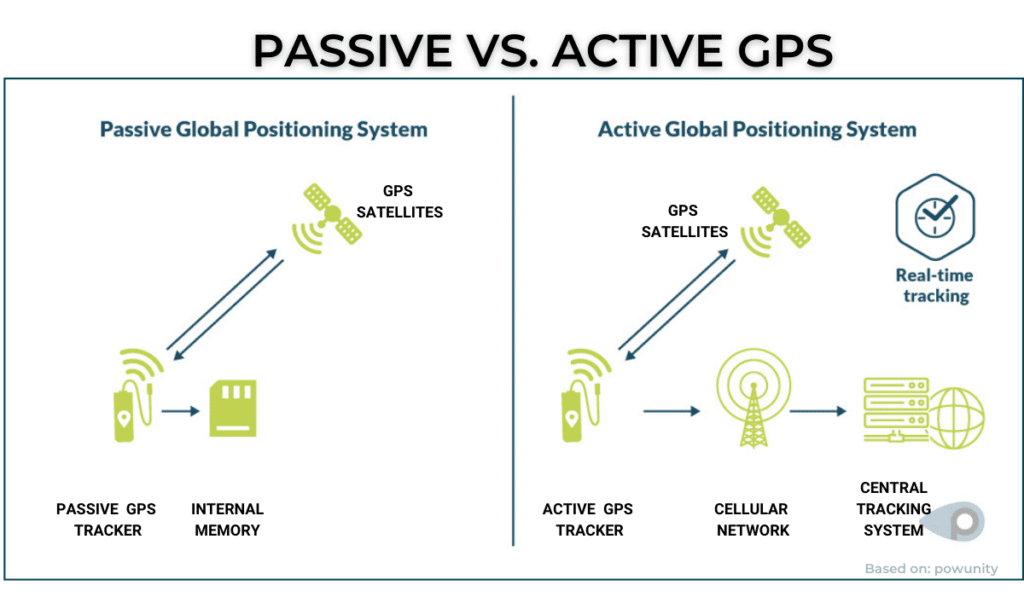
For example, a passive GPS data logger attached to a long-haul truck will collect and store travel data but will not provide the truck’s real-time location like an active GPS tracker would.
Instead, it will store data internally or on an external memory card until it’s downloaded.
But perhaps the most cost-efficient and pragmatic solution for tracking all kinds of equipment can be found in GPS-enabled asset tracking.
Such solutions harness the power of quick response (QR) codes, smartphones, and the Internet.
What does this mean in practice?
Assets are tagged with QR labels.
Although they’re not tracked in real-time, each time a tool is scanned with a smartphone, the QR code uses its GPS tracking function to send location data to a dedicated cloud-based software like our patented solution, GoCodes Asset Tracking.
In the case of theft or simple neglect, it provides you with the missing tool’s last known location and the chain of custody related to it.
As you can see, many GPS tracking solutions can minimize tool theft. You just have to choose the one that fits you best, i.e., one that is easy to use and whose price will not leave you feeling robbed.
Smart Padlocks
Even padlocks have gone digital, and they come with all sorts of perks. So, it might be time to upgrade padlocks on your toolboxes or storage cabinets. In fact, it might be a clever idea to upgrade them across your company’s construction sites.
Grand and petty theft have been plaguing the construction industry for a long time, and the pandemic has just made it worse.
For example, the UK’s Construction Equipment Association (CEA) reports a 50% surge in construction site theft since the lockdown began.
Thieves are getting bolder in the US, too.
That said, smart locks now come in all shapes and sizes.
How about the one shown here?

As a smart padlock, BoxLock is both WiFi and Bluetooth enabled. You share access codes by sending a barcode to your site manager, subcontractors or anybody else, and they then “show” it to the padlock and click, it opens.
It was initially designed to keep packages safe when they’re delivered and you’re not home. Having a strongbox locked with BoxLock on your porch and sending the access code to the delivery person solves the problem of “porch-poaching”.
Designed for indoor and outdoor use, it can also be used on construction sites to prevent “site-poaching”.
It offers other perks as well. For example, it can connect to other tool tracking apps and monitor the use of tools from, let’s say, a gang box.
When rolling toolboxes or other tool storage units are moved from site to site, you can get notifications on your phone when they’re delivered.
And this is only one type of advanced lock. There are also fingerprint padlocks, like the one shown below, that stores up to 500 different fingerprints.
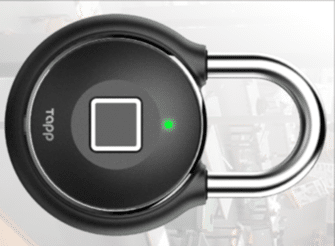
Another handy solution are padlocks that you first activate by pressing a button, and then, if you’re authorized to unlock the padlock, your phone app shows you another button to tap. And click, it opens.
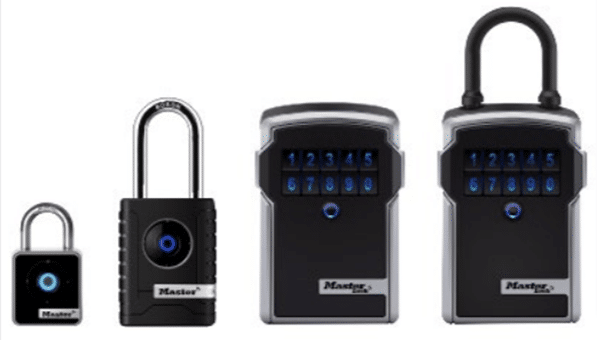
Indeed, with so many innovative solutions offering great theft prevention features, this is a good time to exchange your old lock and key padlocks for a more advanced solution.
Cameras Equipped With Motions Sensors
Security cameras are practically indispensable for modern-day worksites. What’s more, with current technological advances and mass production, they can be an affordable solution that acts as a powerful deterrent for thieves.
When equipment, tools or materials are stolen from a construction site, the money you lose is often the least of your concerns.
You now have to buy or rent whatever is missing as fast as possible if you hope to stick to the project schedule.
Insurance may cover damages, but it doesn’t cover your tarnished reputation.
Construction sites have long been seen as a one-stop shop for all kinds of perpetrators.
However, a combination of low- and high-tech solutions can now provide unprecedented site security.
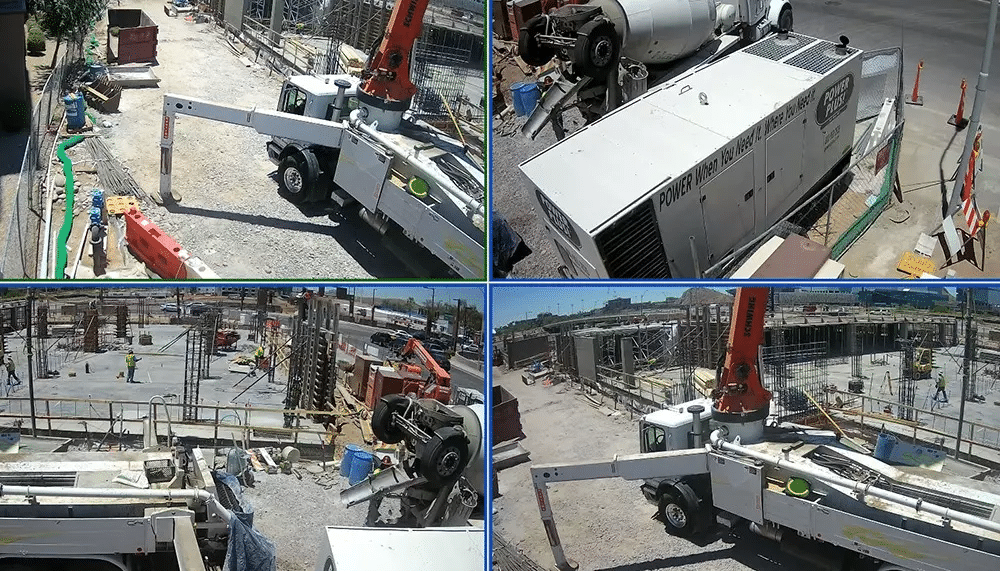
When visible security cameras are installed, they put off potential thieves even when they’re inoperative. Those who choose to ignore them can be caught by other hidden security cameras.
Cameras can record 24/7 or be spurred into action by motion detectors and infrared sensors.
Nowadays, your hands are no longer tied by the lack of electricity or Internet on-site. Wireless camera systems can be solar- or battery-powered and use cellular networks to go online.
How about these being strategically deployed on your job site?

Just as an example, the camera pictured above is part of an end-to-end site surveillance system that runs on batteries and uses cell signals for communication.
Such cameras use passive infrared (PIR) technology to detect movement and make short recordings.
When on-site power and Wi-Fi are up, you can do remote surveillance and get alerts on your phone.
Moreover, the system is portable, meaning it can be easily moved to another site.
In a similar fashion, you can also protect your vehicles with dashcams in their most advanced versions, like the Apeman dashcam featured below.
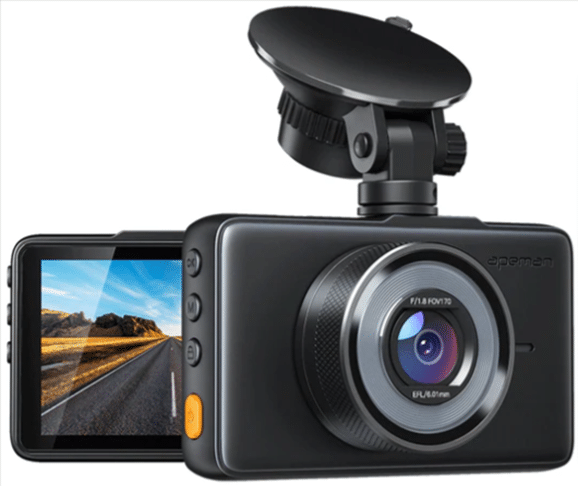
It comes with parking mode, which basically watches over your vehicle or machinery when they’re parked. If it detects rapid movements, sudden light sources, or strong vibrations, the camera starts recording, thus deterring or helping capture perpetrators.
With all these options, there is no reason not to find the right camera system to protect your construction sites.
Alarm Systems
Alarm systems have been deterring and catching thieves on construction sites even longer than their counterparts, security cameras.
Nowadays, they’re wireless and portable, meaning they can be relocated from site to site, thus turning them into a viable long-term investment.
Or you can choose one of many service providers offering integrated security solutions, like the one offered by Safe and Sound Security.
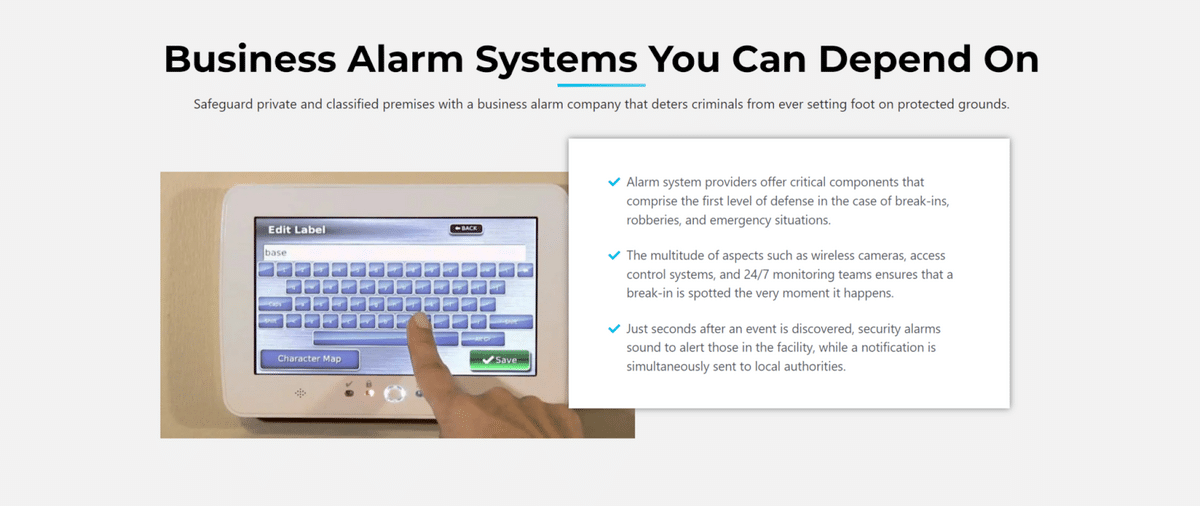
Having long been crucial in preventing construction site theft, the latest alarm systems offer an almost endless array of options. They’ve also gone smart, reducing those pesky false alarms and allowing you to tweak the settings to your liking.
And now there are even alarm systems with invisible fences.
Have you heard about geofences?
They’re digital barriers set around jobsites that can alert you of someone entering the site unauthorized or if there’s movement when there shouldn’t be.
A geofence essentially creates a location positioning system using Wi-Fi, GPS, or cellular signals. It can track equipment, tools, and even people within the designated area, i.e., your busy construction site.

As to how small tools and equipment and large machinery can be tracked inside this invisible fence, there are various options to choose from.
For example, large and valuable equipment can be fitted with active GPS trackers. In conjunction with the geofence, they can help prevent theft by providing instant alerts to your smartphone or your provider’s control center.
In other words, if that new generator you just bought leaves the site without authorization, you will be alerted immediately by the geofence.
And then, the real-time location tracking capability of such trackers will help you get it back quickly.
As for smaller equipment and tools, they can be fitted with barcodes or, even better, QR codes.

Although you won’t be able to sit and watch how they move around the site in real-time, each time they’re scanned, the geofence will record their location.
This obviously makes it easier to find lost or forgotten items around the site. It also makes it easier to detect theft.
In addition, this gives you unparalleled access to inventory management data that lets you streamline your site operations.
So, equipped with the latest in alarm systems, you can stop worrying about theft and start thinking about improving on-site productivity.
Asset Labeling
In addition to monitoring their movement around the site, labeling assets makes your tools and equipment harder to resell if they’re stolen.
If you’re wondering “Can’t a thief just remove the label?”, although the answer is usually yes, there are labels that make that more difficult or even impossible in some cases.
And all of them make reselling the asset much harder.
For example, the label might be made of metal or durable polyester. Such tags are welded on or affixed with industrial-grade glue. There are also other tamper-evident solutions.

As to the type of labels you’ll use on your small tools and equipment, most solutions involve barcodes or QR codes.
Since data processing has gone “big data”, these labels need to contain as much info as possible in a very tiny space.
This is where QR codes are superior to barcodes. They can store much more information.
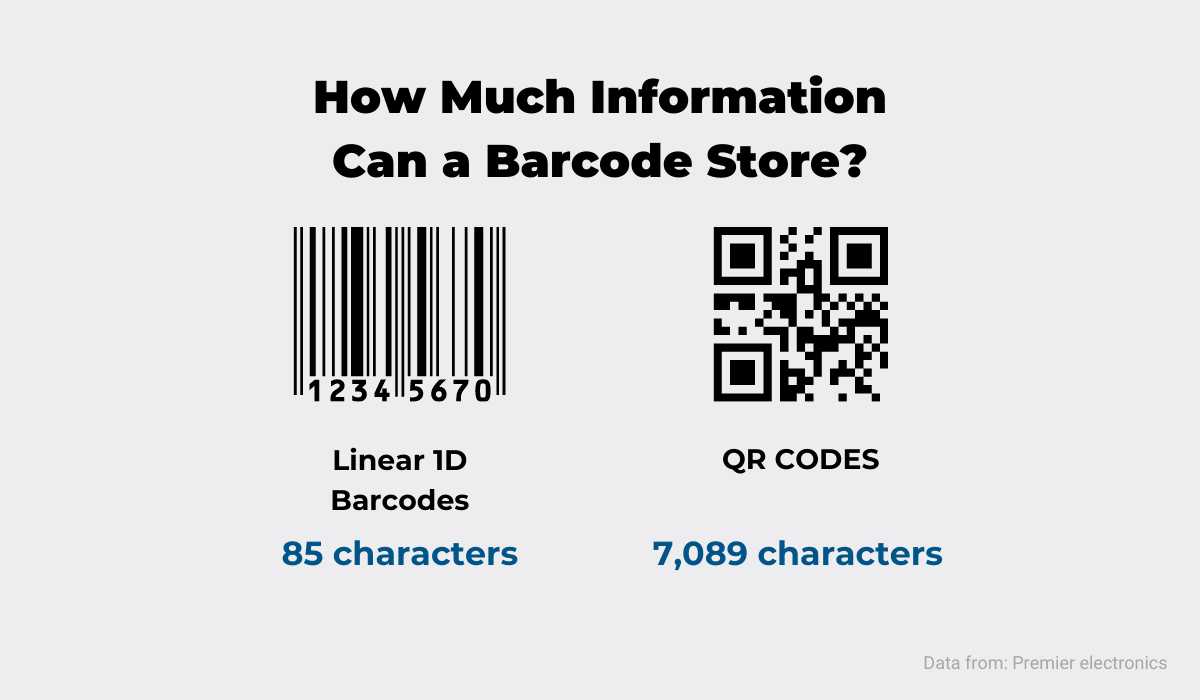
If labeling is not your thing, you can now just spray protection over your tools.
How? By using a new method called microscopic labeling. Innovative companies, such as Data Dot, have been offering this kind of protection for a while now.
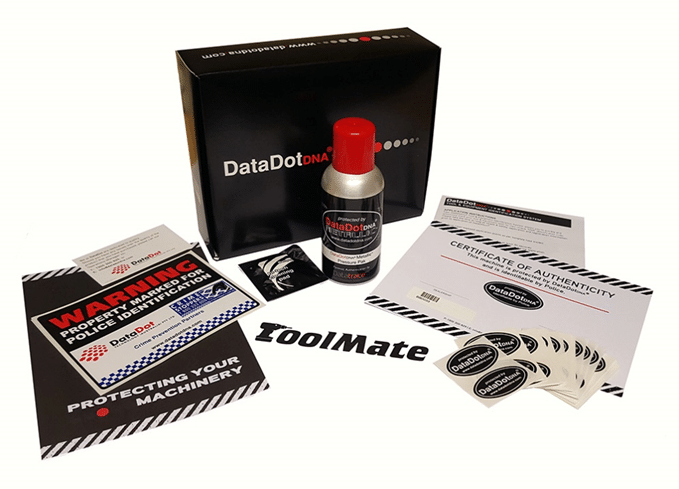
The way it works is that you spray hundreds or more microscopic DataDots on your tools and equipment. Each DataDot carries a unique code for the chosen asset. That code is stored in a national database accessible by police.
Every ToolMate set comes with warning stickers, letting thieves know they won’t get away with taking other people’s property. Since DataDots are almost invisible, and it’s difficult to remove them all, this makes stolen tools very hard to resell.
Also, suppose police find a burglar’s stash of stolen equipment.
In that case, they can simply wave a blacklight or use a 60x scope, read the dot code, and identify the item’s true owner in the database, thus providing proof of ownership and expediting its return.
So, asset labeling can be a big help when you need to monitor or find tools and equipment on construction sites or, when stolen, facilitate their detection and prove your ownership.
With construction sites being complex as they are, contractors often don’t notice that something is missing until they need it. Automatic inventory tracking can alleviate this problem quite easily.
Digital Inventory Platforms
This is where digital inventory platforms come in. They use tracking data to provide numerous productivity-enhancing features.
Let’s start with tool check-in/check-out software, and later we’ll see how it fits into end-to-end inventory management platforms.
A company first chooses what it wants to tag for tracking. Ideally, it wants to track all company assets.
Its assets tagged, the company then establishes a check-out/check-in system for, let’s say, construction site tools, equipment, and materials.
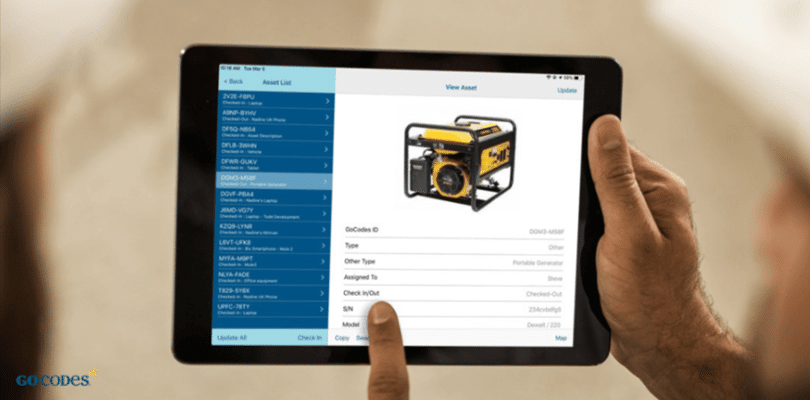
This means that all these items are scanned when issued and returned. In fact, every time someone scans an item, the software records its location.
So, if it goes missing, you have its latest known location. And that can be of great help in preventing theft and recovering stolen items.
One of the most efficient ways to set up efficient check-out and check-in procedures is to affix QR code tags to each asset which are scanned every time the asset is used and a record of usage is created.
This is both easy-to-use and easy on your wallet.
That said, according to the recent Dodge Report, what construction companies are looking for the most when pondering the use of new tech are ease of use and low costs.
Our asset tracking solution, GoCodes Asset Tracking, checks both of those boxes.
Once the system is up and running, the valuable data collected by the software provides means to analyze on-site workstreams.
When integrated into a wider inventory platform like material management/resource planning software, this data can be used to strengthen accountability, improve overall planning and maintenance, and enable smart delivery scheduling of construction materials.
Yes, even scheduling when materials are delivered to a site can minimize opportunities for theft. Why? Because materials sitting on-site unwatched are an easy target for thieves.
A digital inventory platform allows you to streamline delivery workflows, making sure materials are delivered just in time, and the assigned staff is already waiting to unload them.
In short, construction sites are just too complex to monitor and manage without any technological help. Thankfully, modern software solutions make this job much easier and help ensure your assets are accounted for once the work is complete.
Conclusion
Now that we’ve reviewed six ways in which technology can help you prevent tool theft, it’s clear that technology can do so much for you.
Using one or combining several of these technologies can certainly cut down on crime. It can also do wonders in terms of more efficient workflows, streamlined costs, and enhanced productivity of your construction business.






